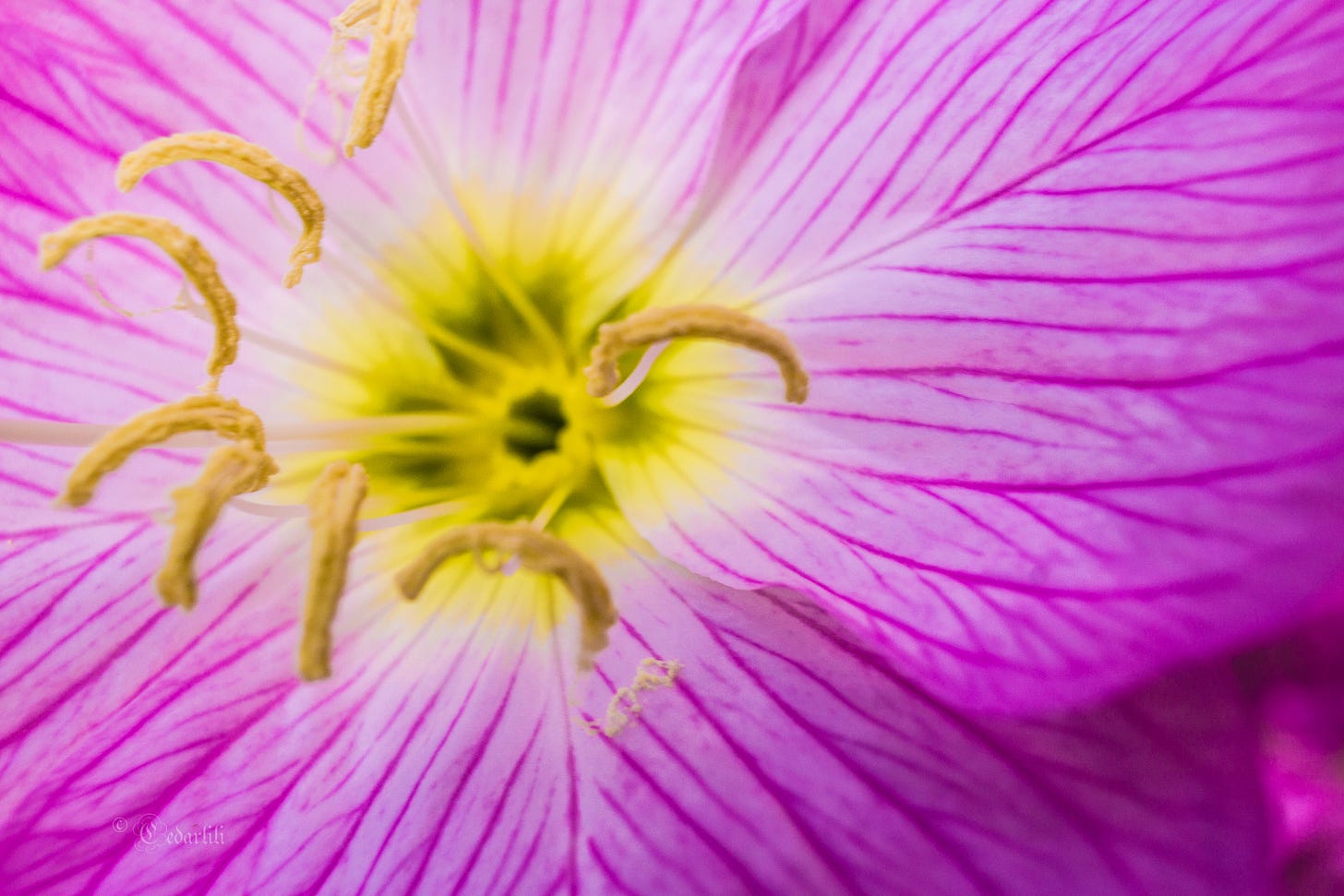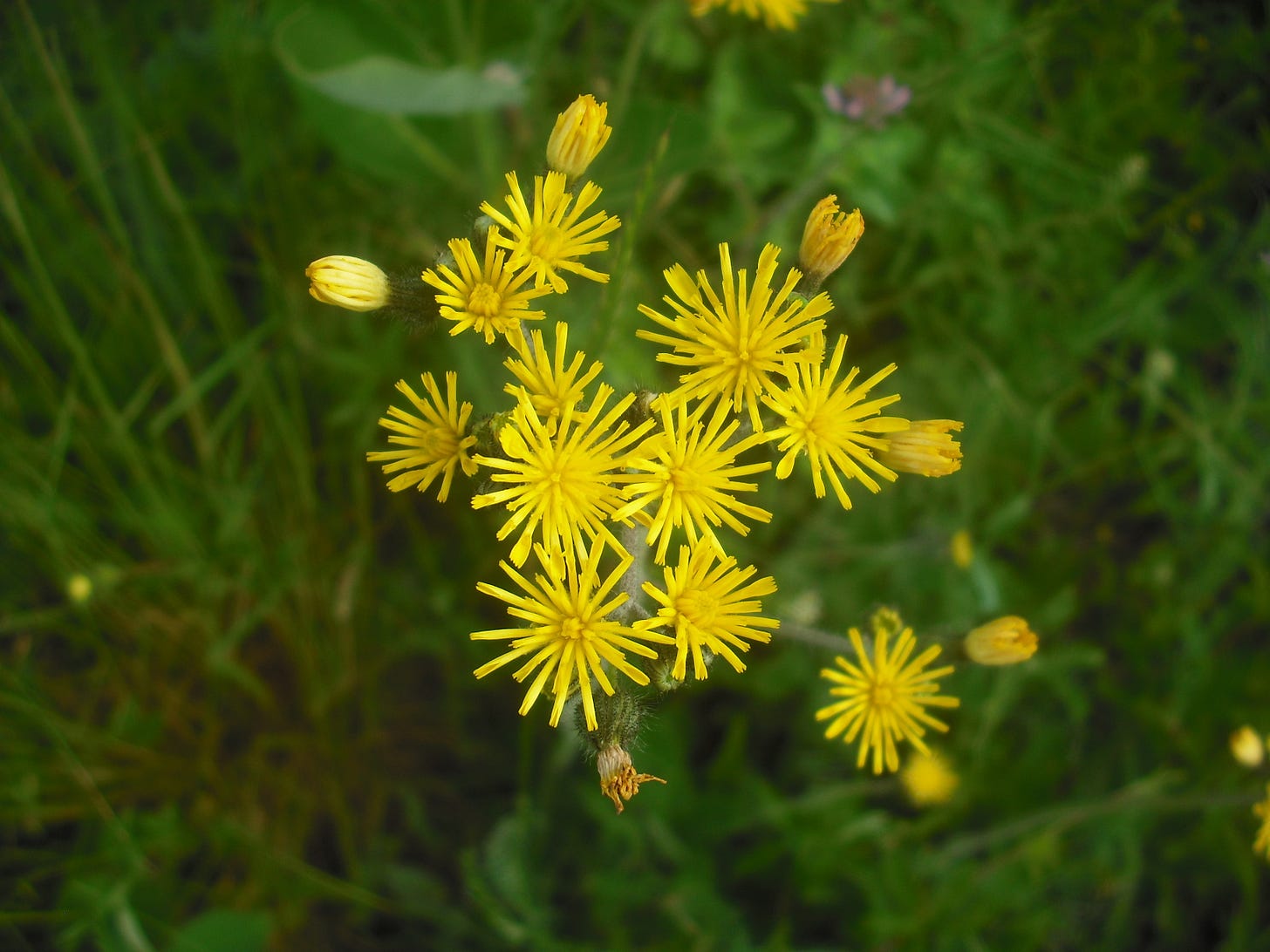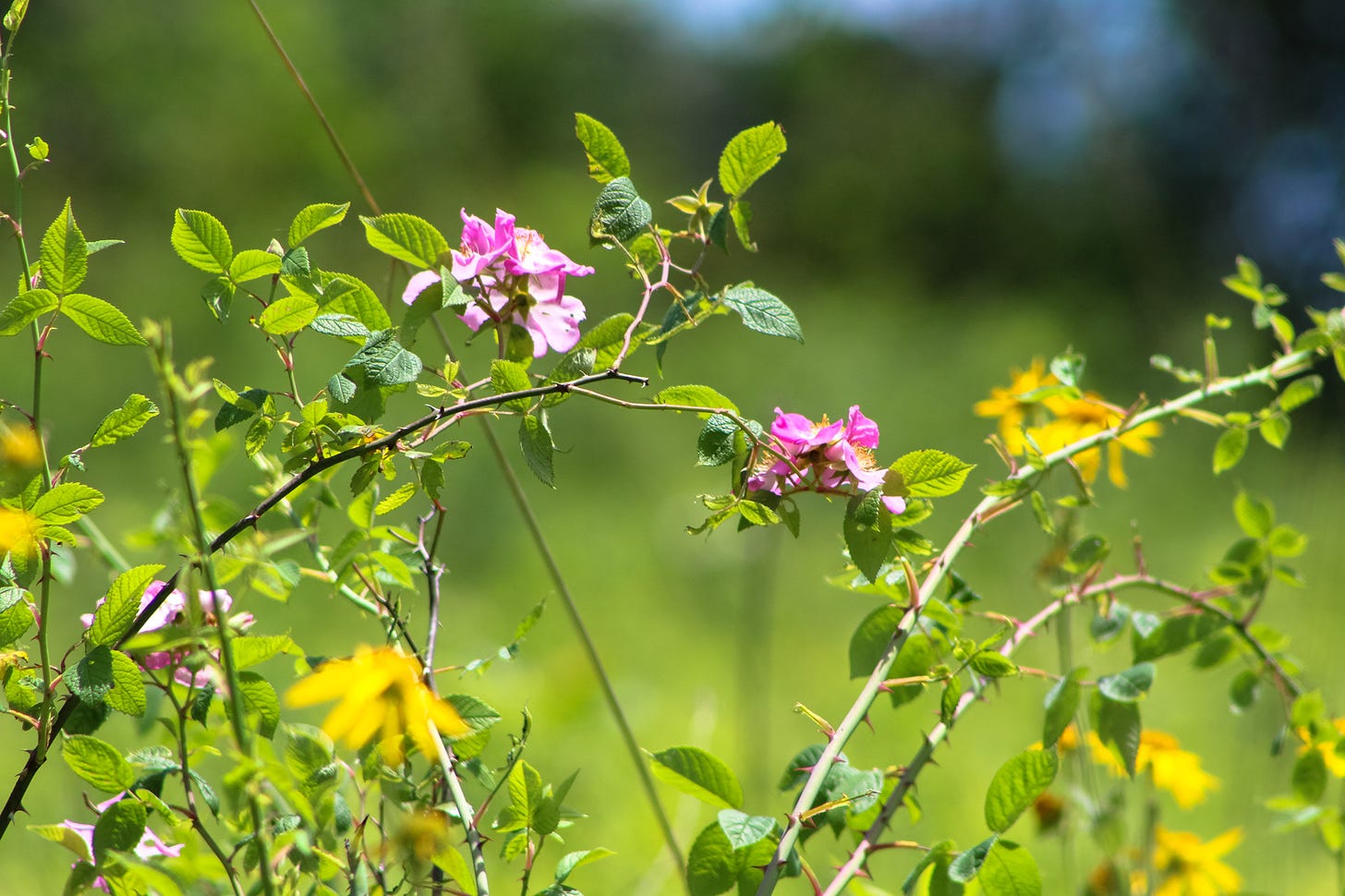A Profusion of Petals
Have you ever wondered why there is such a broad diversity of flower shapes? What dictates that this plant will have two petals, this one five, and that one over there 200 or more? The answer is in the genes, of course, but flowers themselves are an interesting genetic phenomenon. The cells that develop into flowers are found on the apical meristems, which is another way of saying the tip of a stem. These cells are where growth happens - unlike a human being, plants will often keep growing out and out along stems or branches until they are told to stop. The mechanisms for 'stop' and 'flower' or 'leaf here' are complex, and hidden inside the cells, triggered by different external stimuli. Once they are triggered, they develop in whorls of cells that grow into different organs of the flower, such as the pistil, stamens, petals, and sepals.

Painting with Flower colors
Most of us are familiar with the basic parts of a flower, and it's interesting to contemplate why they are so different than the rest of the plant: yet they started out all the same at the cellular level. It was only the genetic switches that produced an ornate bloom here rather than a leaf. The specific genes have been traced by substitution of mutated genes, which led to the development of flowers with sepals where petals ought to be, and so forth. Turning a flower inside-out, as it were, reveals what parts of the plant's DNA dictate petal development.

Many dozens, or even hundreds of flowers make up each 'flower' in a Compositae family bloom.
Flower color is dictated by other genes, and it can be seen in some species what their genetic make-up is, as the 'pure' or homozygous varieties have one color, while a hybrid (heterozygous) is a blend of two colors, the classic example being that you can produce a pink flower by breeding red and white ones, just like you can make pink paint by blending colors, something that seems improbable in a living organism. Cross-breeding plants is something that has been successfully done for generations upon generations, leading to the development of most of our food crops, but also to flowers that never appeared in their wild-type parents. Plants have mechanisms that keep them from losing too much genetic information, however, which was an interesting discovery that they can selectively 'turn on' genes that were not inherited from parents in Mendelian fashion, allowing them to survive in-breeding and other stressors in environment, through selective re-working of RNA into their genome.

Some flowers never even open completely, attracting pollinators through scent alone.
Before we can decide if a rose is a rose, by that name or any other, first we must understand that plant genetics are more complex than humans. You are the child of your parents, with diploid chromosomes - one set from one parent, one from another. Plants are polyploid, with many more chromosomes in each cell than just two pairs. Roses can have anywhere from 14 to 56 chromosomes. No wonder it's difficult to breed a new rose species, or to predict what color a hybrid will be! Exploration of rose genomes reveals that not only do they have many chromosomes that harbor the genes that dictate flower shape and color, but many of the common species are so highly inbred and related to rosa chiniensis it is difficult to access the alleles necessary to make a change. For all the variety of modern roses - visit a big rose garden if you can, I highly recommend the one in Portland Oregon, as I made several visits in childhood that left me with a permanent awe of roses and gardens simultaneously - they come from relatively few originators: rosa chiniensis, rosa gallica, and rosa foetida, primarily. Roses are so important a commercial crop that their genes have been mapped for study to try and crack the difficult puzzle of plant inheritance. Sometimes, as I read about polyploidy, epigenetics, the above-referenced ability to retrieve 'overwritten' information from ancestral genomes, I wonder just how lucky Gregor Mendel got with his choice of the relatively uncomplex pea plant to study and formulate the theory of genetics we extrapolated into what we understand today.

Wild roses are modest compared to the bountiful cabbage rose that may boast 200-300 petals to this one's five. But still, they are close relatives.
it's a pretty amazing backdrop from which to admire the flowers of the fields. "Consider how the lilies of the field grow: They do not labor or spin. Yet I tell you that not even Solomon in all his glory was adorned like one of these."

Jack-in-the-pulpit is such a fun oddity of a flower.




